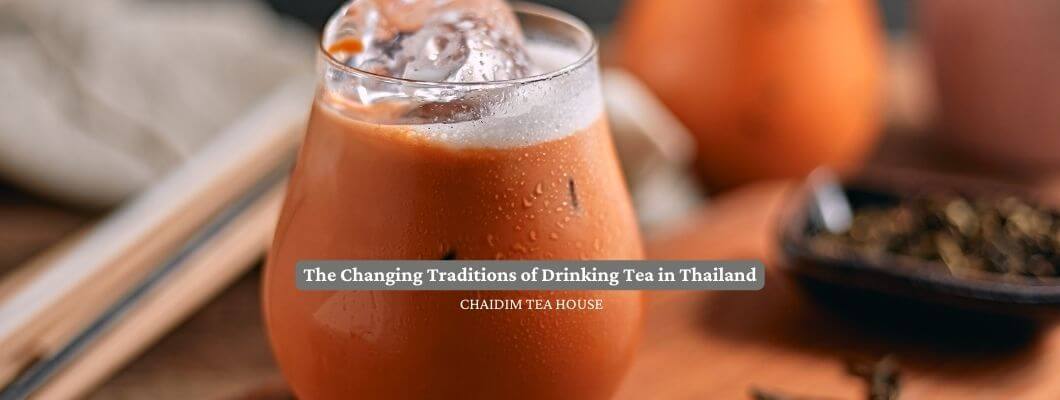
The Changing Traditions of Drinking Tea in Thailand
Traditional Tea Culture in Thailand
1. Ancient Tea Trees:

Ancient tea trees are tea plants that are hundreds of years old, some even reaching over 3,000 years old! They are primarily found in Yunnan Province, China, which is where most pu-erh tea comes from.
There is some debate about the exact age that qualifies a tea tree as "ancient," with some saying it's 100 years and others saying it's 300 years. Regardless of the exact cutoff, these trees are much older than the typical commercially cultivated tea plants, which are usually just a few years old.
Ancient tea trees are prized for the tea they produce, which is said to be more complex and flavorful than tea from younger trees. This is because the older trees have had more time to develop their root systems and absorb nutrients from the soil. The leaves of ancient tea trees are also larger and thicker than those of younger trees.
Because the leaves are larger and come from less densely planted trees, they are harder to harvest and produce less tea, which contributes to their higher price tag. The tea produced from ancient tea trees is also said to have health benefits, although more research is needed to confirm these claims.
2. Types of Tea:

Ancient tea trees are most commonly used to produce pu-erh tea, a dark, fermented tea with a rich history dating back over 2,000 years. Pu-erh tea is prized for its complex flavor profile, which can range from earthy and mushroomy to sweet and fruity, depending on the age of the tea and the processing method used. Unlike most teas, which are best enjoyed soon after they are produced, pu-erh tea can be aged for many years, similar to fine wine. This aging process allows the tea to develop even richer and more nuanced flavors.
There are two main types of pu-erh tea: sheng pu-erh and shou pu-erh. Sheng pu-erh tea, also known as "raw" pu-erh, is unfermented and undergoes a natural aging process. As it ages, sheng pu-erh tea develops a smoother, more mellow flavor and aroma, with notes of earth, wood, and even fruit. Shou pu-erh tea, also known as "cooked" pu-erh, undergoes an accelerated fermentation process that gives it a stronger, earthier flavor and aroma right from the start. This fermentation process also makes shou pu-erh tea more shelf-stable than sheng pu-erh tea.
Ancient tea trees can also be used to produce other types of tea, such as black tea, green tea, and white tea. However, these teas are much less common and can be quite expensive.
3. Old-Style Thai Tea:

- Locals cherish this traditional way of preparing and enjoying tea.
Evolving Tastes and Preferences
1. Bubble Tea Boom:

- Thai consumers embraced bubble tea, leading to its widespread availability in cafes and street stalls.
2. Matcha Craze:
- Matcha, the finely ground green tea from Japan, also found its way into Thai tea culture.- Matcha lattes and desserts are now common in trendy cafes.
Flavored "Thai Tea"
1. Origins:
- Initially, Thai tea was flavored with crushed roasted tamarind seeds and orange blossoms. Over time, it evolved into the vibrant orange-colored Thai tea we know today, often artificially flavored.
- Street vendors continue to serve this iconic Thai tea.
2. Street Stalls and Carts:

- You'll find Thai flavored tea sold at countless stalls and carts throughout Bangkok, typically in powdered form for instant preparation.
- The convenience of these ready-to-mix packets appeals to busy urban dwellers.
In a world where ancient tea trees meet bubble tea kiosks, Thai tea remains a delightful fusion of tradition and innovation. Sip, savor, and celebrate the ever-changing flavors of Thailand! 🍵
For a more detailed exploration, you might also want to read the research paper titled “Development of the Tea Industry in Thailand,” which explains tea cultivation, processing, and marketing. Additionally, if you’re curious about crafting the perfect cup of Thai tea, check out the comprehensive guide on “Thai Tea Demystified” for step-by-step instructions.
Enjoy your tea journey! 🍵.

Leave a comment